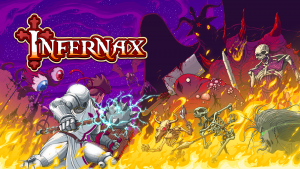
The next entry in the Soulcalibur series, Soulcalibur VI, was recently released, and fighting game fans of all stripes are eager to get their hands on it. An unfavorable fan reaction to Soulcalibur V resulted in a dejected fanbase and poor sales; Soulcalibur VI, from the very beginning, was meant to return the series of 3D fighting games to its roots. And from my experience over the past few weeks putting dozens of hours into the new title, Bandai Namco has succeeded in crafting a worthy entry in the series.
After five years since the last major Soul title, Soulcalibur VI arrives with the goal of tapping back into what made the franchise so beloved in the first place. At its core, the Soulcalibur series is about a powerful sword, Soul Edge, as well as the various characters that have been affected by it in their travels. It is a series about good and evil, determinism and freedom, and the depths of inhumanity people will go to to gain power. Supposedly.

Others might be fond of the games for very different reasons. But whether you fell in love with Soulcalibur because of the lore or the fan-service, you will be content with this newest offering in the franchise.
A focus on story has been a major focal point of the sixth title in the Soulcalibur series. After the negative reaction to the story mode of V, Bandai Namco, with new project leadership, has decided to double down on what made the series so great. As a result, Soulcalibur VI is, in many ways, a reboot of Soulcalibur II, often considered the best entry in the series. Fan favorite characters return with new stories, classic tales get expanded on, and new fighters fill out an already diverse cast. In contrast to V’s barebones story mode, the singleplayer in VI is chock full of content. Every fighter on the roster, including DLC/ guest characters, have their own mini-campaign telling the story of their relation to Soul Edge and the rest of the cast. In addition, custom characters get their own psuedo-RPG experience, titled Libra of Souls. And of course, classic challenge modes and endurance tests round out the singe-player experience for the competitive layer. Even without a connection, you won’t run out of things to do anytime soon.
Characters in this game are a mix of old favorites and some new blood. As mentioned, those looking for fanservice won’t have to look far, with characters like Ivy and Sophitia looking as skimpy (and ridiculous) as ever. And don’t get me started on Voldo. Returning fighters don outfits meant to evoke their classic designs. One negative here, however, is the lack of secondary outfits. There are no alternate costumes, you can only change the color of a characters default outfit. This stands in contrast to the previous games in the series; where some costumes would become so beloved by the community that they would surpass the character’s default design in popularity.
However, despite some minor caveats, character choice and design in this title is exceptional. Characters are lovingly brought to life with great care, each having their own unique personality, body language, and animations. Custom characters have more options than ever to be truly unique, with over a dozen different races to choose from and plenty of new items to try on. Even guest characters, such as The Witcher’s Geralt of Rivia or Nier Automata’s 2B simultaneously blend well with the rest of the cast while still bringing flair from their respective series’ with them.

Of course, you can’t forget the gameplay. Is it good? Is it advanced enough for longtime fans of the series, but accessible enough for new fans to jump into feet first? I would say the answer is a cautious “yes.” New mechanics, such as the oft-talked about reversal edge, add new facets to the game’s signature 1v1 3D arena fights. Movement and attack controls are refined and polished, rarely causing frustration. New players will find accessible moves and combos, while advanced competitors will have plenty of high-skill moves to practice and pull off.
However, there are a few negatives, such as with the new reversal edge feature. This new mechanic can make fights tedious, due to the long nature of the animations and the rock-paper-scissor mini-game it involves. This is especially notable in low-skill fights in casual matches; these can take quite some time due to the spamming of reversal edge by inexperienced players. However, a low-level fight is just as likely to finish quickly, given the unbalanced nature of some of the fighters. Nightmare has caught particular hate for being overpowered; prepare to see Nightmare mains everywhere you go in casual, low-medium skill matches. Overall though, the game presents a solid foundation that simply needs moderate-tweaking as the game goes through its lifecycle, there are no major design flaws that need overhauls.
Soulcalibur VI marks a triumphant return for the series after half a decade of absence. While not flawless, the game nails absolutely everything that made the series so beloved in the first place. I dare say it is the best fighting game on the market right now.
Rating: 9/10







